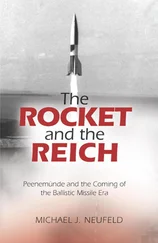The situation appeared bleak for Dollmann—his next stop could well be Nuremberg. But he knew that he had an ace up his sleeve, and he immediately played it. Dollmann took a piece of paper from his pocket and handed it to Pagnotta. “ Please call this number,” he told him. “Ask for Major Angleton. He knows who I am.”
Major Pagnotta was quite familiar with Major Angleton. In fact, Pagnotta’s team of Nazi hunters was headquartered in the same building on Via Sicilia as Angleton’s rival intelligence operation, the Strategic Services Unit’s X-2 branch. Pagnotta’s CIC unit was on the first floor, Angleton was on the second, and British intelligence was on the third. Pagnotta and his men didn’t trust Angleton—they thought he was “ a devious and arrogant son of a bitch,” in the words of Pagnotta’s aide William Gowen. Angleton seemed to work more closely with the British spies than with his U.S. Army colleagues, and the British treated him like one of their own. Before transferring to Rome in 1944, Angleton had been stationed in London, where his X-2 unit was overseen by British intelligence.
The espionage scene in postwar Rome was rife with rivalries and competing agendas. Some U.S. intelligence units, such as Leo Pagnotta’s, were determined Nazi hunters. But other operatives, such as Angleton, had very different objectives. This spy-versus-spy atmosphere made Pagnotta’s investigative work extremely complicated.
As Pagnotta tracked top Nazi fugitives in Italy, many of whom had escaped from the British-run prisoner-of-war camp in Rimini, it became clear to him that he was often working at cross-purposes with Angleton and British intelligence. One of the most notorious fugitives, SS captain Karl Hass, who had overseen the Ardeatine Caves massacre, mysteriously escaped every time Pagnotta’s team tracked him down and turned him over to British occupational authorities in Italy. Finally, after his fourth arrest, Hass escaped for good. It was not until many years later that Hass was tracked down in Argentina and extradited to stand trial in Italy for his role in the massacre. Hass received a life sentence, but by then he was an old man, and his failing health kept him out of prison.
Unsurprisingly, after capturing Dollmann, Pagnotta decided to hang on to him, placing him in a U.S. military prison in Rome instead of handing him over to the British. In the beginning, Dollmann was a cooperative prisoner, readily revealing the address of his apartment on Via Archimede. When Pagnotta’s team raided the apartment, they narrowly missed catching Dollmann’s infamous roommate Walter Rauff, who managed to flee to Bari, on the Adriatic coast, where he boarded a ship for Alexandria, Egypt—the next stop in the Nazi exterminator’s long and winding ratline. Rauff would cap his bloodycareer in Chile, where he became a top adviser to DINA, military dictator Augusto Pinochet’s own Gestapo. When Rauff died in 1984—at age seventy-seven, after successfully rebuffing years of extradition attempts—hundreds of aging Nazis flocked to his funeral in Santiago, where he was laid to rest amid loud salutes of “Heil Hitler!”
Pagnotta did snare another fugitive who was living in the Via Archimede apartment, SS officer Eugen Wenner, who had also played a part in the Operation Sunrise maneuvers. It soon dawned on Pagnotta’s team that Angleton was operating a safe house on Via Archimede for a stream of Nazi fugitives who were connected to Sunrise and other Dulles operations. They even traced the car driven by Dollmann’s chauffeur to Angleton’s father, who kept a villa nearby in Parioli.
Nobody would get to know the deeply clever ways of Angleton in Rome better than William Gowen, who, at age eighteen, was one of the youngest members of Pagnotta’s crew of Nazi hunters.
It was only a matter of time before Jim Angleton—who made it his business to meet the important people in postwar Rome—crossed paths with Bill Gowen, who, despite his youth, was known to be well connected. Gowen’s father, Franklin, was a career diplomat who had served under Ambassador Joseph P. Kennedy in London and was currently the assistant to Myron C. Taylor, the former U.S. Steel chairman whom FDR had appointed as his special representative to the Vatican during the war. Gowen’s family had money—one of his ancestors had been president of the Philadelphia Stock Exchange—but they were by tradition Democrats. Roosevelt was fond of Franklin Gowen, whom he regarded as one of the few blue-blooded members of the diplomatic corps he could trust.
The younger Gowen brought a special sense of mission to his Army counterintelligence job. His family owned property in Italy and had deep roots there. His grandfather Morris was living in Florence when war broke out. Although he was Episcopalian, Morris Gowen was denounced as a Jew and put on a train for Auschwitz. When the Germans realized he was American, he was taken off the train in northern Italy and put in an SS encampment, where the seventy-seven-year-old man died in July 1944 of what his death certificate stated was “exhaustion.” Bill Gowen’s family had a number of Jewish family friends in Italy who suffered similar fates. “ When I got to Romein 1946 as a young soldier,” he later remarked, “I didn’t need to read about the Nazi terror. My family had been touched by it.”
All in all, young Bill Gowen had a pedigree that Angleton clearly found both appealing and threatening. Gowen’s dedication as a war crimes investigator posed a distinct problem for Angleton, who viewed Nazi fugitives like Dollmann and Rauff in more pragmatic terms. And the Gowen family’s Italian background also infringed on Angleton’s turf. “I think that between the father and son, the Angletons thought they had a lock on Italy, and on the Vatican,” Gowen observed. “Jim Angleton was very jealous of my family, because he wanted to have a monopoly on Italy. And anything that might threaten him had to be taken care of.”
Angleton made a point of keeping Gowen close in Rome. In early 1947, Gowen and his father were invited to the Italian wedding of Angleton’s sister, Carmen, where Angleton chatted up the younger Gowen and insisted they meet for lunch someday. They got together soon afterward at Angleton’s favorite spot, a Jewish restaurant near Rome’s once thriving ghetto. Angleton was fond of the restaurant’s house specialty— carciofi fritti —and he took charge of ordering when the waiter arrived at their table. To Gowen’s surprise, however, Angleton—who presented himself as an expert on all things Italian—displayed so little mastery of the language that his younger lunch companion had to take over communication with the puzzled waiter. Gowen, who was born in his family’s Livorno villa, was impressively fluent in the local tongue. It was yet another thing that Angleton found irritating about Gowen.
Lunch companions like Bill Gowen always made Angleton uneasy. Gowen—whose family was filled with bankers, lawyers, diplomats, and Episcopalian ministers—had a solid Social Register background. And, despite his tender age, he was already a man of the world, having shuttled around Europe’s diplomatic posts with his father. With his cheery mid-Atlantic accent and his continental sartorial flair, Gowen seemed born and bred for the top tier.
Angleton was also raised in wealth. But his father, Hugh, was not the Main Line type. He was a swashbuckling, self-made man who had swept up his future wife, Carmen, when she was a teenager in Mexico, after he joined General John “Black Jack” Pershing’s 1916 expedition to capture Pancho Villa. Despite young Angleton’s British affectations, his face would always carry traces of his south-of-the-border heritage. Even as he rose to the top ranks of the U.S. intelligence establishment, he remained something of an outsider in that thoroughly WASPy world, marked not just by his brilliant, idiosyncratic personality but by his mixed ethnicity. Angleton was, in short, what his Nazi associates would call a mongrelized American.
Читать дальше











